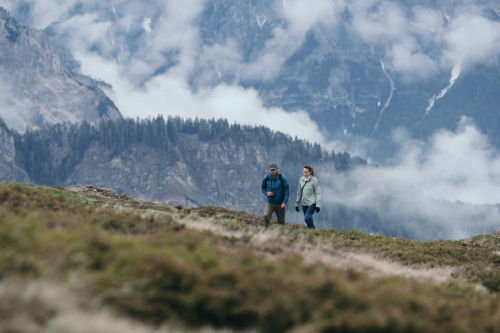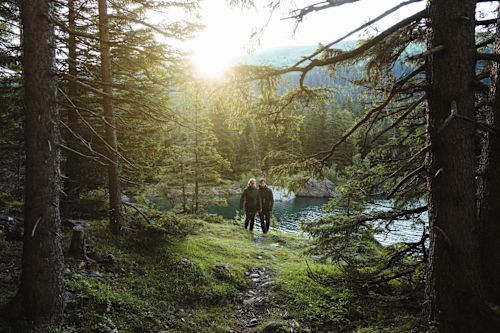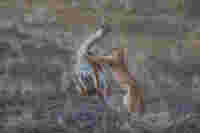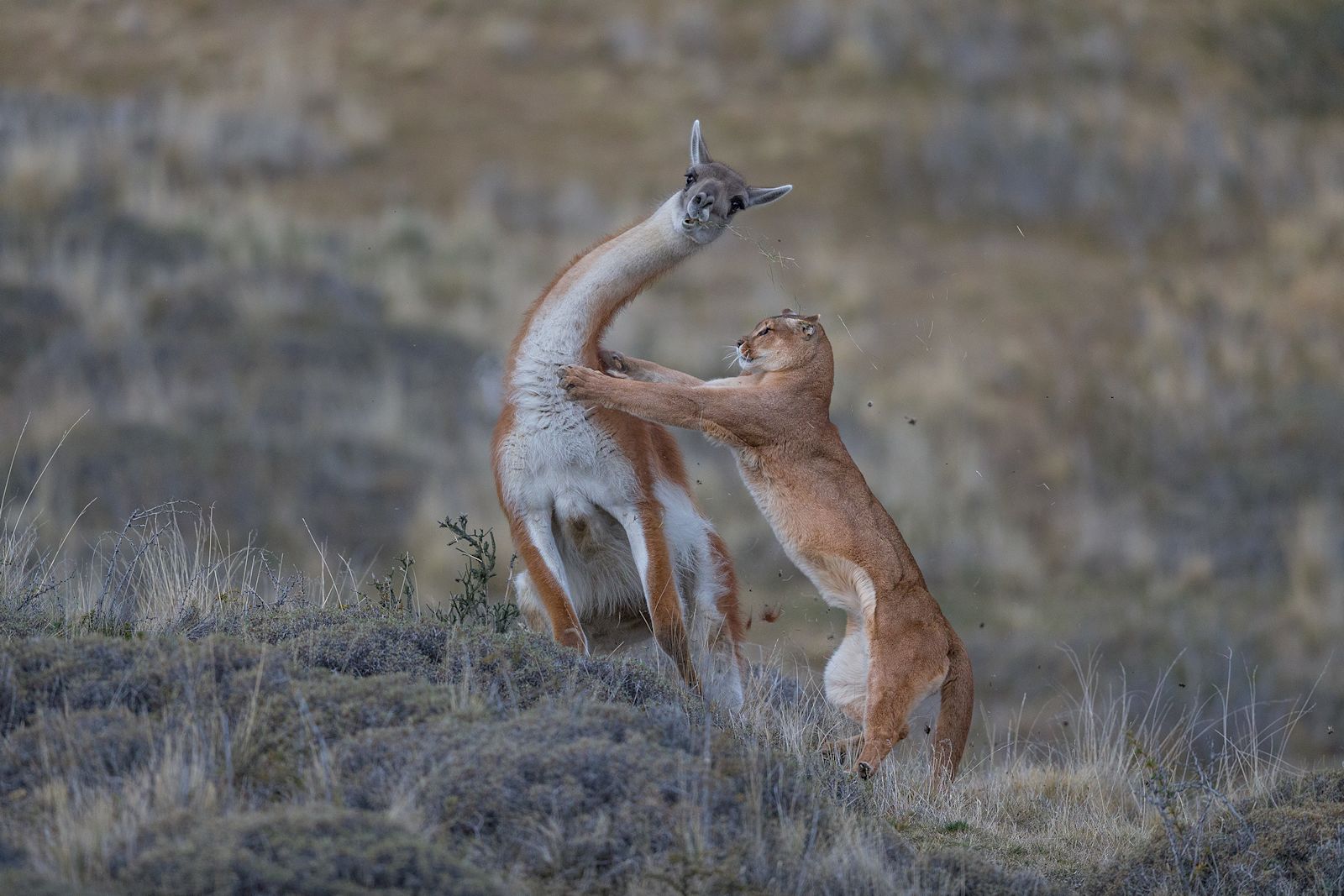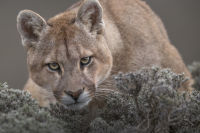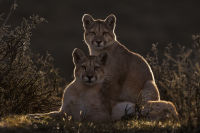Sarmiento is out without her offspring today. We’re hoping she’s in a hunting mood, because without her young her chances of success are far greater. Young cats are often careless and give warning to prey animals. In the afternoon, the female puma is on the lookout for prey. One kilometer away, a large herd of about 30 guanacos is grazing.
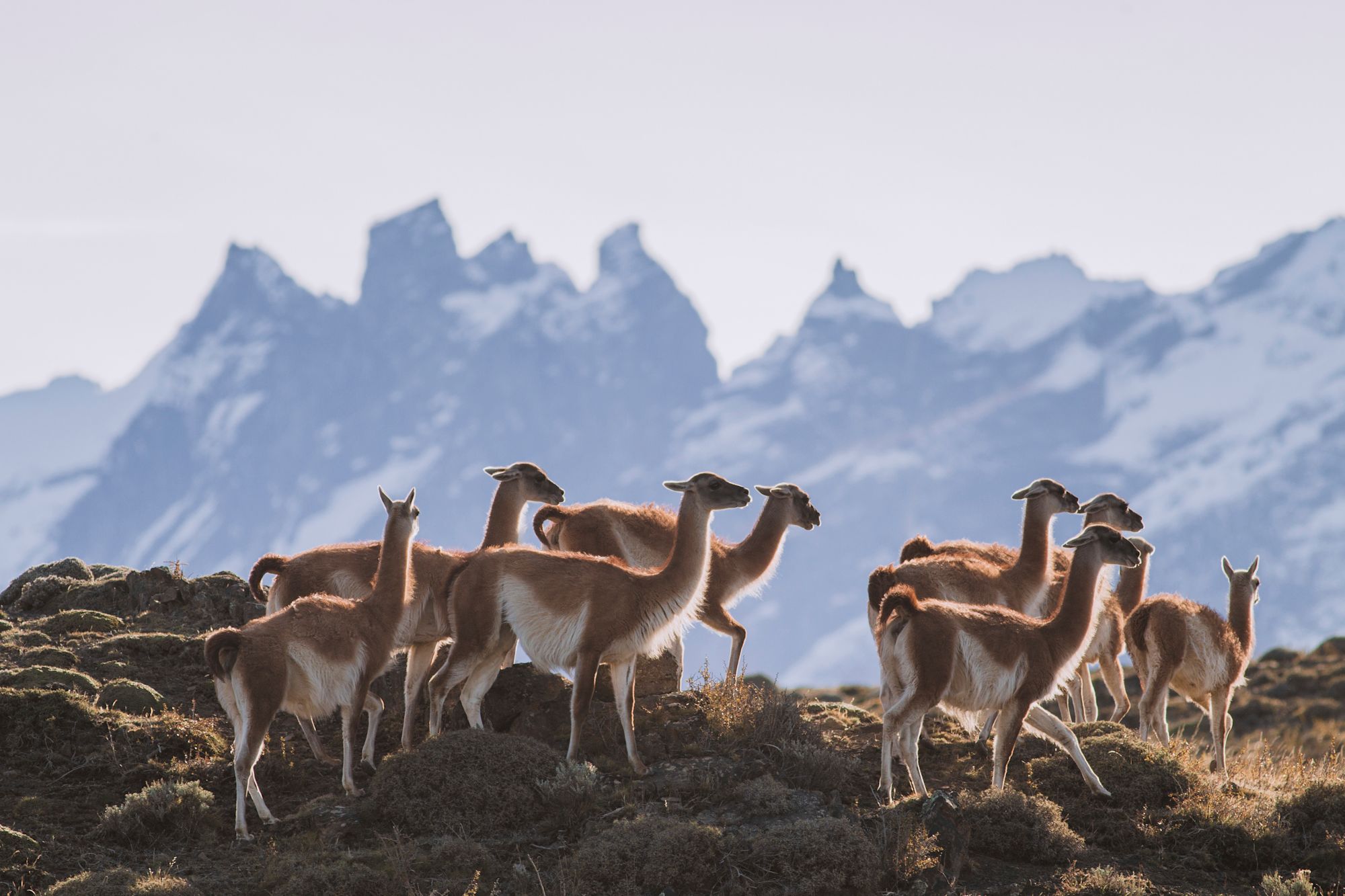
They have not yet seen the cleverly concealed huntress. In a movement characteristic of her species, she powerfully extends her back before running toward the herd, using dense vegetation or large boulders to conceal her presence. She makes just one slip, she’s not quite fast enough crossing an open area of land – the guanacos react immediately, giving loud warning calls that alert all animals in the surrounding area. The first hunting attempt has failed! It’s now a waiting game again until prey comes into sight.
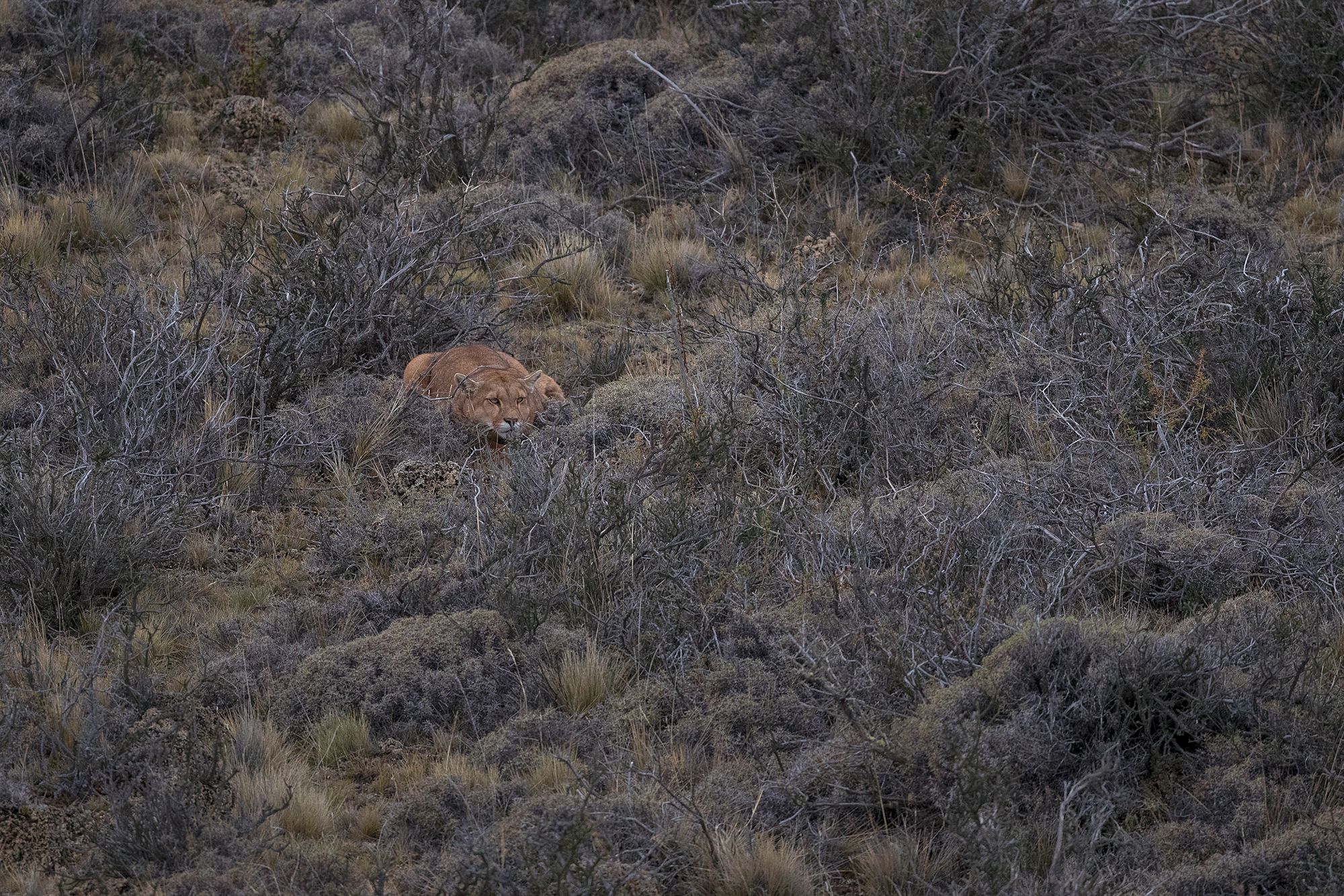
Luckily, this doesn’t take long and another herd of guanaco appear on the hill opposite. Sarmiento immediately ducks down and starts stalking the animals, concealing herself wherever she can. But once again she is discovered. I now understand why on average just one hunting attempt in five is successful. The herd has taken to its heels, leaving only one large male as lookout.
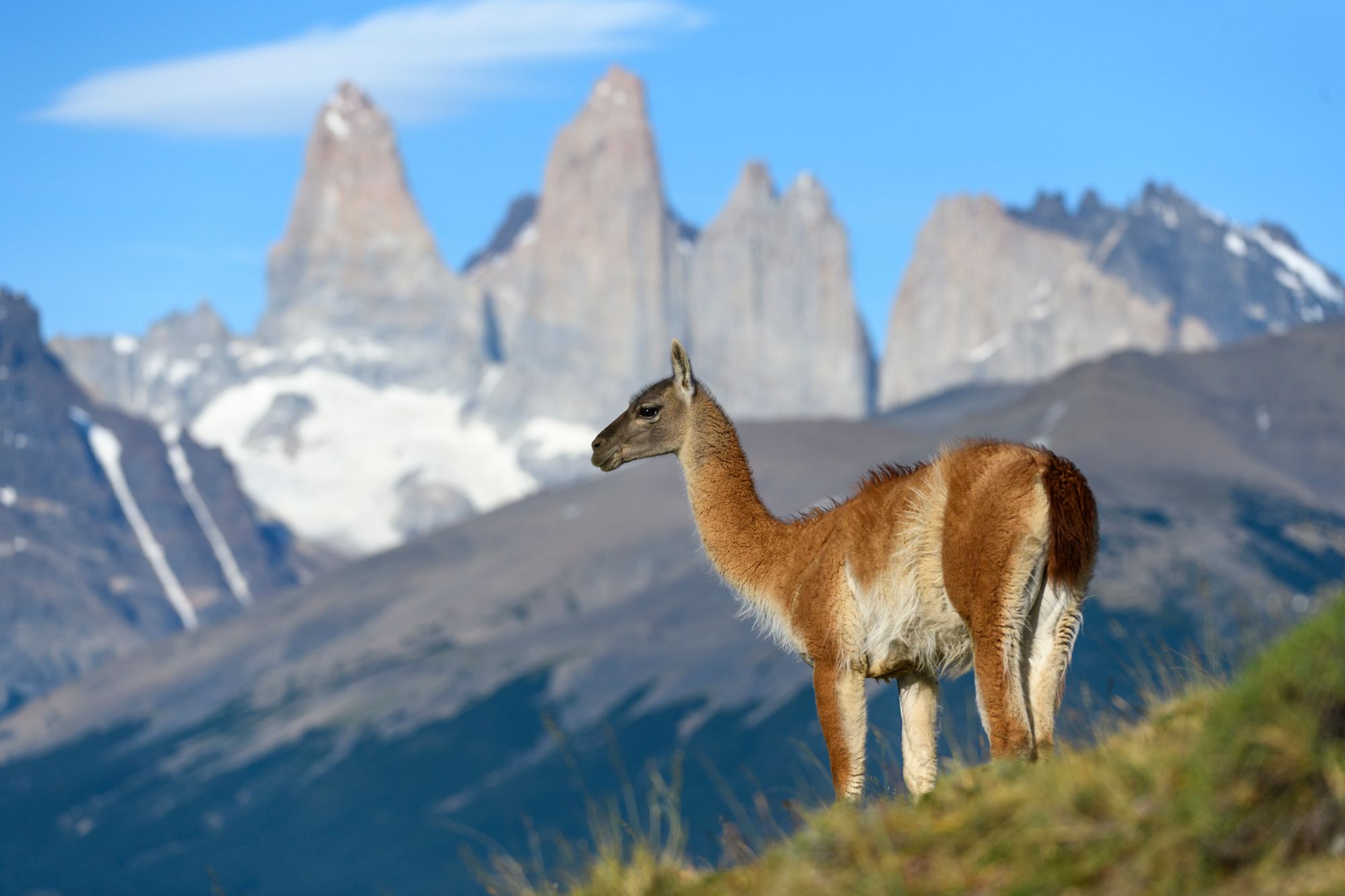
He is standing in the middle of a small plateau from where he can survey the surrounding area. Sarmiento has no chance of sneaking up unobserved. Nevertheless, she hides behind a bush and waits patiently. An hour later, the guanaco seems to have forgotten about the danger and makes a momentous mistake. He leaves his vantage point to graze. Sarmiento immediately recognizes her opportunity and circles around the open area to slowly creep up behind her prey. We tensely watch the situation unfold.
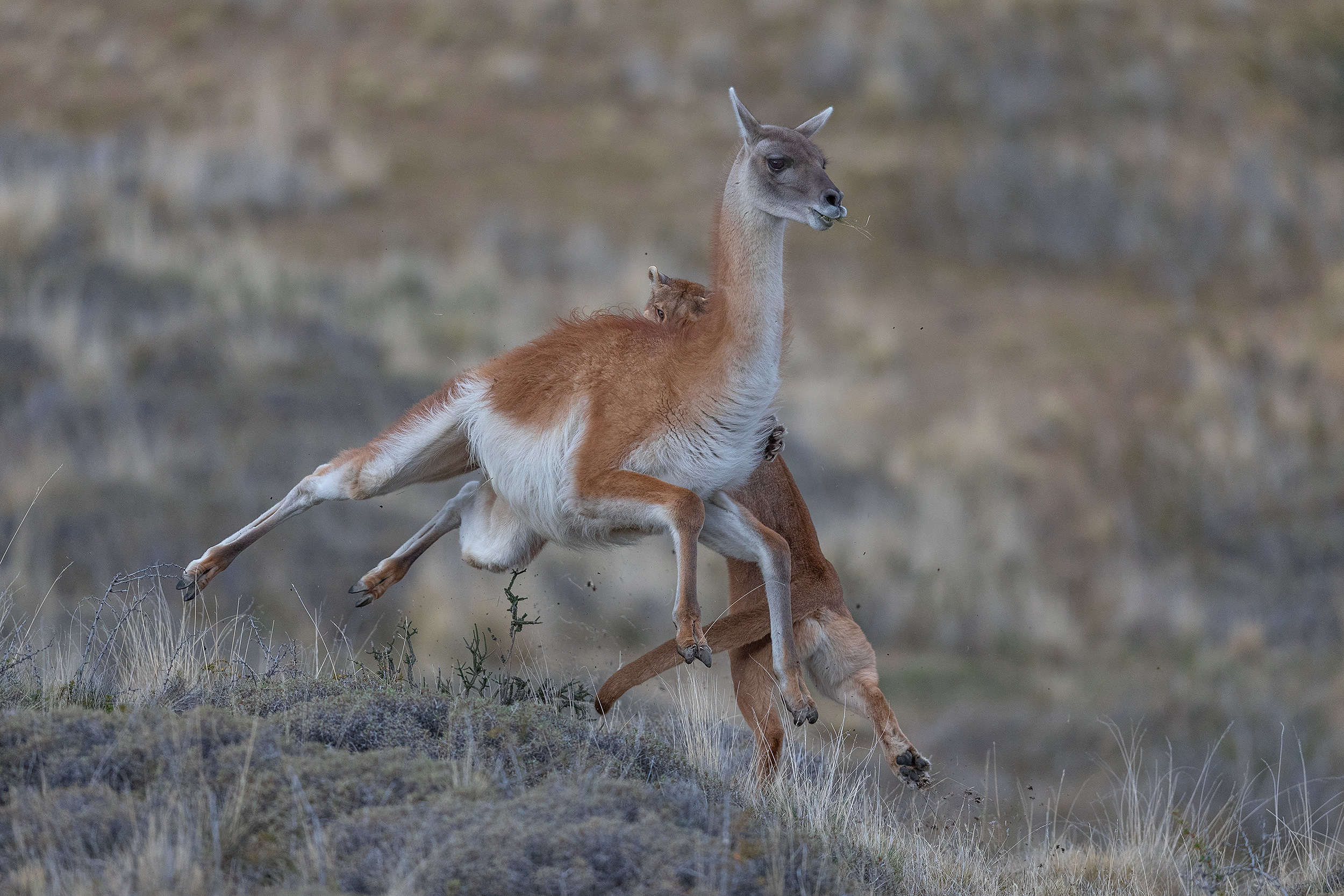

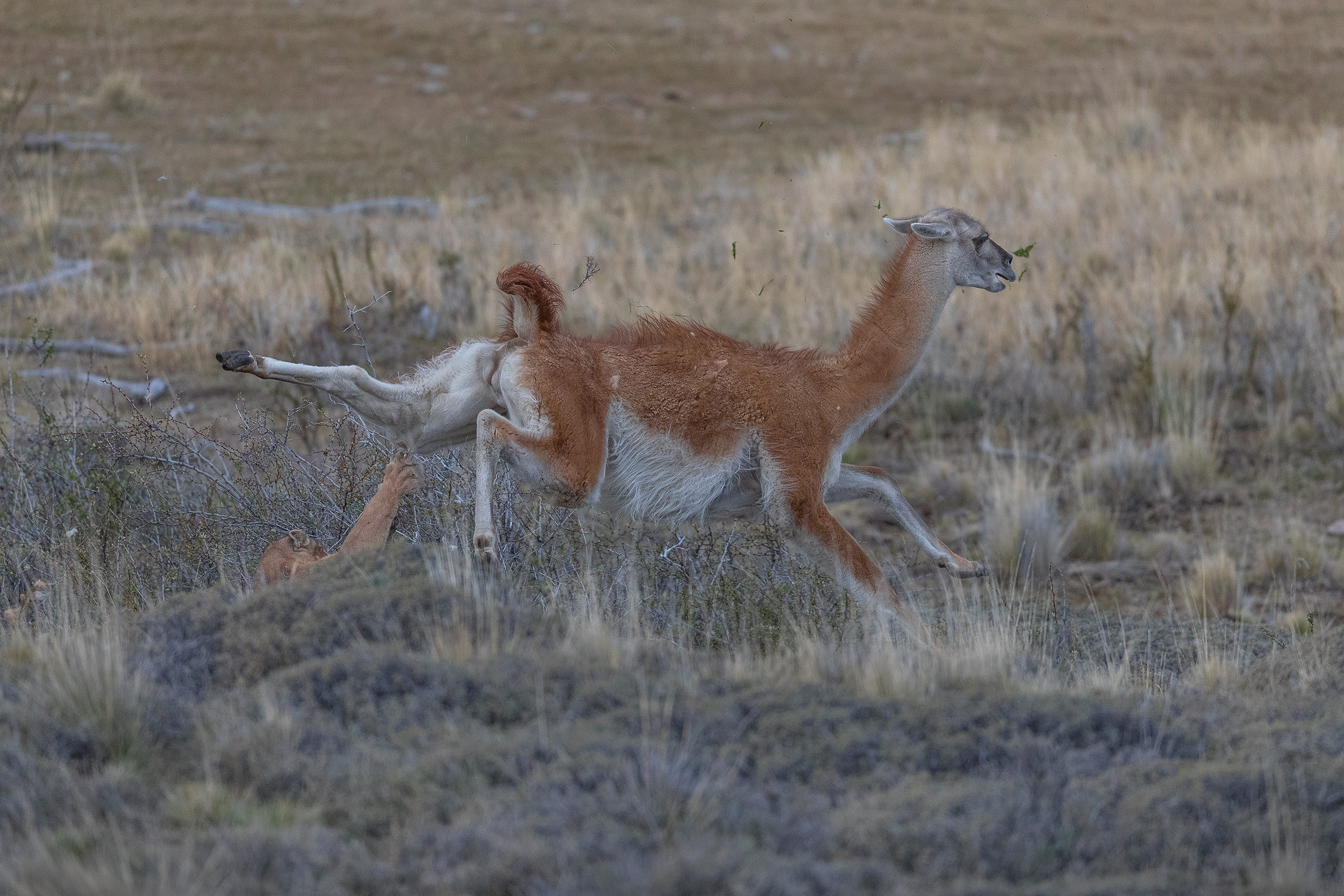
I take up position some 50 meters (160 feet) in front of the guanaco and assign my two trackers to locations with a clear view of the puma, so they can guide me if I lose sight of her. Completely unsuspecting, the guanaco keeps coming toward me, grazing, looking at me, grazing... I constantly need to move backward to maintain the right perspective for my telephoto lens. It carries on like this for almost half an hour, over a distance of about 500 meters (1,600 feet).
Then suddenly the radio message comes from Roberto: “Ten meters” – the puma will attack soon! I can’t see the puma. She must be lurking right behind the guanaco, which is standing on a small hill. Looking through the viewfinder of the camera, I concentrate on the guanaco, focusing on the animal’s neck, where the puma will need to jump to wrestle it to the ground. Suddenly, seemingly out of nowhere, Sarmiento flies up from behind. The experienced guanaco reacts quickly and turns to the side.
The puma loses its grip on the powerful animal. But she’s back straight away, jumping on the guanaco’s back and biting into the animal’s neck with her long fangs. For a fraction of a second, the puma hangs onto the guanaco, twisting and turning, trying to bring it down. But the male guanaco plays its last trump card and falls onto the puma with its entire weight. Sarmiento is left reeling from the impact, the guanaco frees itself and sprints off. The whole thing took just four seconds. I can’t believe what has just played out right in front of my camera. Back with my trackers, we look at the images on the camera screen and joyfully hug each other.
Copyright Bilder: Ingo Arndt & Mauritius
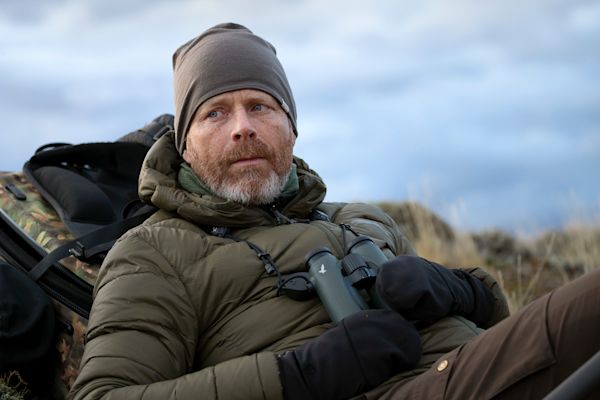
About the author
Ingo Arndt
Ingo Arndt was born in Frankfurt am Main, Germany. From early childhood, he spent every single minute of his spare time outdoors in nature. Soon he realized that photography was a useful tool in environmental protection, so, after finishing school in 1992, Ingo plunged into the adventurous life of a professional photographer. Since then, he has traveled around the globe for extended periods as a freelance wildlife photographer, photographing reports in which he portrays animals and their habitats. In the past few years he has been mainly on assignment for GEO and National Geographic Magazine. With his images, Ingo wants to stimulate and increase the awareness of his viewing audience and show them the magnificence of nature.
His adventures with the pumas in Torres del Paine National Park have also been published in the book PumaLand (2019).
